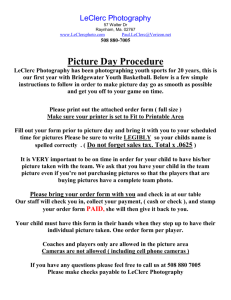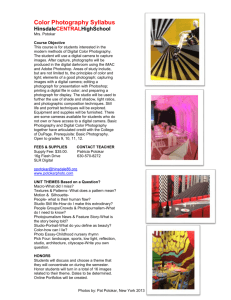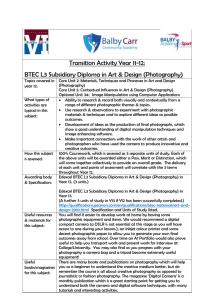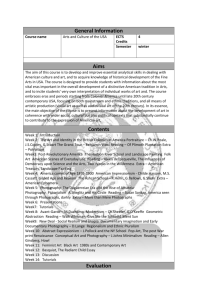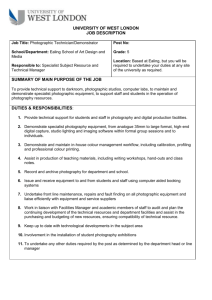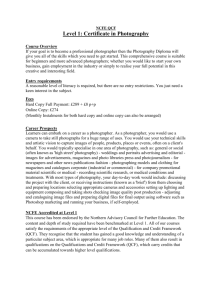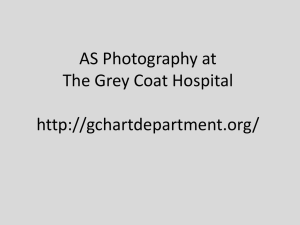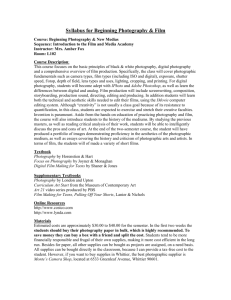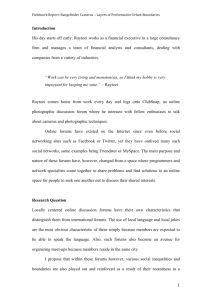Example Narrative: Visual Artwork Project Studio Art major
advertisement
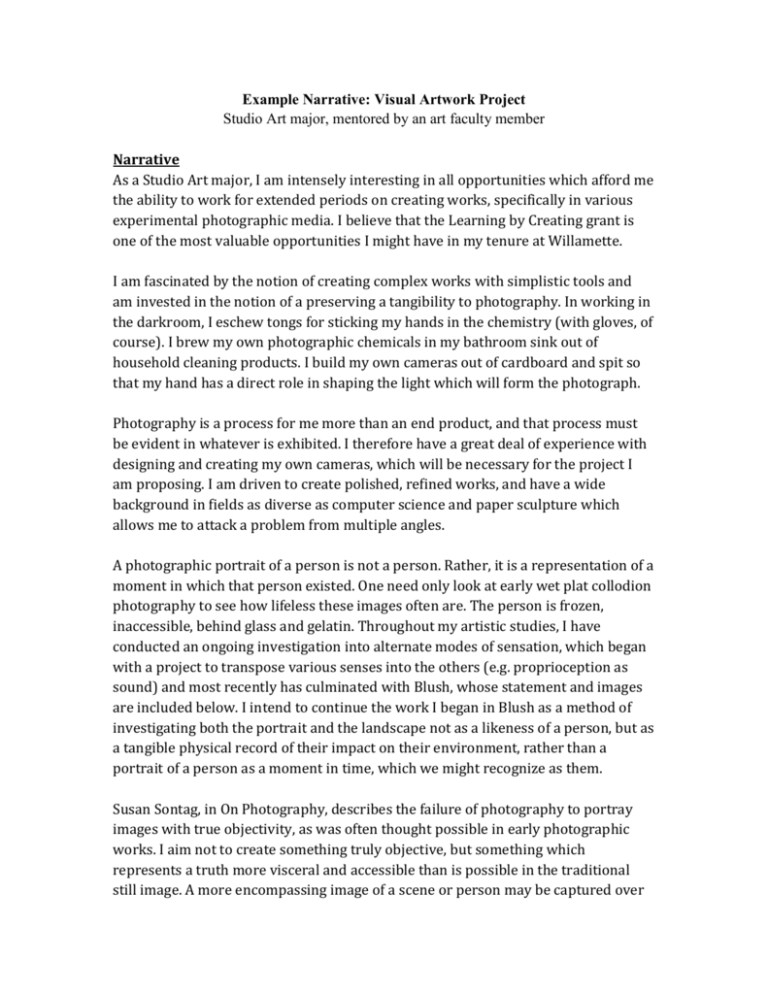
Example Narrative: Visual Artwork Project Studio Art major, mentored by an art faculty member Narrative As a Studio Art major, I am intensely interesting in all opportunities which afford me the ability to work for extended periods on creating works, specifically in various experimental photographic media. I believe that the Learning by Creating grant is one of the most valuable opportunities I might have in my tenure at Willamette. I am fascinated by the notion of creating complex works with simplistic tools and am invested in the notion of a preserving a tangibility to photography. In working in the darkroom, I eschew tongs for sticking my hands in the chemistry (with gloves, of course). I brew my own photographic chemicals in my bathroom sink out of household cleaning products. I build my own cameras out of cardboard and spit so that my hand has a direct role in shaping the light which will form the photograph. Photography is a process for me more than an end product, and that process must be evident in whatever is exhibited. I therefore have a great deal of experience with designing and creating my own cameras, which will be necessary for the project I am proposing. I am driven to create polished, refined works, and have a wide background in fields as diverse as computer science and paper sculpture which allows me to attack a problem from multiple angles. A photographic portrait of a person is not a person. Rather, it is a representation of a moment in which that person existed. One need only look at early wet plat collodion photography to see how lifeless these images often are. The person is frozen, inaccessible, behind glass and gelatin. Throughout my artistic studies, I have conducted an ongoing investigation into alternate modes of sensation, which began with a project to transpose various senses into the others (e.g. proprioception as sound) and most recently has culminated with Blush, whose statement and images are included below. I intend to continue the work I began in Blush as a method of investigating both the portrait and the landscape not as a likeness of a person, but as a tangible physical record of their impact on their environment, rather than a portrait of a person as a moment in time, which we might recognize as them. Susan Sontag, in On Photography, describes the failure of photography to portray images with true objectivity, as was often thought possible in early photographic works. I aim not to create something truly objective, but something which represents a truth more visceral and accessible than is possible in the traditional still image. A more encompassing image of a scene or person may be captured over hours or days than in seconds, as habits and interactions are laid bare for the viewer to inspect. The viewer sees a very personal record of the space in which the image was created, and is invited to interact with it due to the scale of the final prints. Portraiture is a style which is heavily codified and, though portraying people less literally, I believe can be successfully subverted to make a statement. The connections which we make as humans more define us than the photographs which we take of ourselves. Through imaging those connections as motion through space, I may draw attention to and make tangible our impact on our environment in a way which cannot be manipulated to portray any one viewpoint. If photography is to represent the truth of a person, as portraiture is intended to do, it must represent the person in situ. I endeavor to find a method by which this may be accomplished. Landscape photography is similarly regimented in its style. But how can a landscape, urban or rural, be considered fully represented without showing how it is acted upon. Environmental photography often seeks to capture the biodiversity of an area. It strikes me as infinitely more representative to show not the face of animals and people, but their interactions with their environment. Using the zone plate camera technology which I refined for Blush, I will image landscapes both urban and rural and capture portraits of people while they perform mundane everyday activities (cleaning their house, eating breakfast, etc.). The cameras render–via long exposure–sensual, delicate, ghostly images of the movements of and interactions between actors in the scene. The zone plate “lenses” may be sensitized to specific wavelengths of light, allowing me to take sequential images in different color spectra and then composite them together, with the stationary objects being rendered normally while objects in motion appear blurry and sensual with colors out of register with one another. The negatives being so detailed, the works will be printed in large format from both film and paper negatives, thus allowing the viewer of the works to become absorbed in the scene. The cameras will be presented alongside the images with technical descriptions of their operation. It is important to me that evidence of the process of creating accompanies the finished product in all of my works. Preparation I have taken Introduction to Experimental photograph, in which I furthered my study of various methods of cameraless image making, notably pinhole and zone plate photography as well as digital output. For works produced during this course, please see http://orrstud.io/tagged/iep. In addition to Experimental Photograph, I have also taken Introduction to Black and White Photography, which exposed me to traditional methods of capturing images. I have, though my own independent experimentation, managed to dovetail these two curricula by exploring image making with extremely outmoded cameras, specifically a Twin Lens Reflex camera from 1941 and several Kodak Brownies which I have restored by hand, dating from between 1911 to 1947. I have been granted access to the studios necessary to do my work through permission of Professor Opie. Timeline for Completion June 15 - Commence work, begin sketching designs June 20 - Begin prototyping in foamcore July 1 - Have completed foamcore cameras, begin fine-tuning and stress testing July 4 - Test prototype foamcore cameras at holiday celebrations July 10 - Have completed modifications to files and sent for fabrication July 20 - Have completed final cameras out of Delrin August 10 - Have shot and developed all images August 16 - Have printed all final prints August 20 - Have all matting complete Estimated Budget Camera Construction Materials, including processing chemicals, equipment, and materials for prototyping $2000 Delrin for final cameras, laser cutting of delrin, foamcore for prototyping, chalkboard paint for prototyping, velvet for lightproofing, adhesives, transparency film for zone plates, 4x5 sheet film, reliable sheet film developing tank, reels for developing tank, specialty chemistry for darkroom work, photo paper Printing Materials, including inks and matting $800 Epson Hot Press natural paper, Epson inkjet inks, archival mat board for matting prints Living Costs, including apartment and food $1700 Food, apartment rent, gas for driving to various shooting locations


